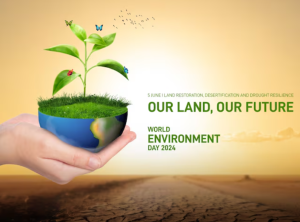Corporate globalisation has been dominant for more than two decades. It is now time for political, ecological and social globalisation to catch up.
Majuli – the shrinking, riverine island in the Brahmaputra, is untouched by the world, or so it seems. The local tribes are content with sustainable lifestyles and proud of their culture. They have experienced the buzz of urban life and returned to the quiet of their surroundings. The faint yet powerful sign of globalisation is connectivity in the region – telecommunication networks here are very efficient. The new government has promised a road connecting Jorhat to Majuli. Currently, a public ferry transports people to and from Majuli three to four times a day. Majuli may never be the same again – once the road is built.
The world has settled into globalisation. It is second skin to most of us. The hype surrounding it during the turn of the century has quietened. The quiet, though, is an awkward one, not entirely comfortable with reality. Globalisation has proven advantageous in several aspects, but through a holistic lens, it has fallen short of its potential. Corporate globalisation has stood out, with businesses looking outward for newer, unsaturated markets using scale as the buzzword. Those in my generation who straddle the period of license raj and the “post liberalisation” era in India, are only too aware of the changes we have seen in the last decade and a half in India – both for better and for worse.
Whether this connectedness has yielded undiluted positive outcomes in the political, economic and social spheres across the globe, is questionable, and rightly so. Globalisation was viewed with rose tinted glasses because of its economic benefits. How else can one explain the story of Bengaluru – a clear example of a city whose social and political capacity lagged behind its prowess in attracting economic gains like no other city in India? The city became “filthy” rich – metaphorically and literally. The chasm between promises and impact here is clearly wider than anticipated.
Bangalore, as much as it was a metaphor for globalisation gone right in the early 2000s, is a metaphor for globalisation gone wrong a decade later. We are now faced with the fallout of unbridled economic growth that came by way of the information technology boom. In the wake of recent unrest in the city, Mint editor R Sukumar wrote, “…By numbers alone (one dead, around 100 buses burnt, Rs. 20,000 crores of productivity and business losses to companies), the violence the city saw wasn’t significant—a sign of the troubled times in which we live—but it was almost as if, for a few hours, someone had peeled back the motherboard of India’s own Silicon Valley, and shown us the ugliness beneath”. (Why Did Bengaluru Burn?; Mint; September 19, 2016).
The social, economic and political environment is changing the very context of globalisation. Market realities are dynamic and in many ways, the timing couldn’t be better for protagonists of this phenomenon to balance the skewed benefits of economics with social, environmental and political gains. The journey of globalisation is peppered with instances of what went right and what didn’t. The lessons – encompassing cultural confluence, trade practices, the coming together of world powers for safety and security, ecological imbalances, growing social disparities, crumbling cities and rising insularity across developed nations – are aplenty.
Is it time to shift gears to a slower and steadier pace that allows for a more balanced worldview? Is it time to broaden and redefine the metrics for success to include assimilation of cultures, interdependence, security of citizens, sustainability – not merely as jargon, but as the common lexicon associated with globalisation? Is there potential for civil society, NGOs, governments and businesses to come together to make globalisation more equitable? Clearly, this is underway and there is an increased level of awareness and discussion.This must manifest itself in action, at much deeper and broader levels.
In the mid nineties, globalisation equalled Americanisation. It is interesting to note how the humble “jeans” is now available in almost every nook and corner of India. Chinese polyester has replaced local handloom because of its durability and attractive colours. Globalisation brings in a level of homogeneity to the world. This dilution of diversity may be at the expense of indigenous habits – be it in food, clothing or arts and crafts. A true definition of globalisation has room for assimilation of different cultures and traditions. Laila Tyabji, founder of Dastkar, believes that positioning Indian handloom as “luxury” is a big mistake since its ability to cater to the volume market in India is its biggest advantage. She is absolutely right.
Indian handloom is a shining example of how appreciation and maintenance of inspired regional traditions across India can have a favourable impact on artisans, weavers, and consumers alike. Given our focus on tourism, greater availability of these arts and crafts will expose more people to
the beauty of handmade products, and create a sustained market for these products.
Homogeneity propelled by globalisation goes beyond what we wear and can include the food we eat, the homes we live in and the natural resources that enrich our living. Sensitivity and vision must
go hand in hand to recognise that there is indeed merit in diversity and its preservation.
This is not an argument against globalisation but a case for a more steady and thoughtful approach. In the mid-nineties, there was much talk of India leapfrogging various technological developments to catch up with the developed world. By 1998, the Pentium 4 was launched in parallel in India and the US. We are at a stage today where only pockets of our country have witnessed and experienced both the benefits and downsides of globalisation. Political, corporate and societal will can be harnessed to assist us in distributing its benefits in a truly equitable way.
Majuli, with the right leadership, can emerge as a proud symbol of balanced globalisation. Or it can become another mistake stemming from lessons ignored. Applied moderately and holistically, globalisation can be a powerful phenomenon with many positive attributes. It – and the world – deserves better.
Nandita Lakshmanan (Chairperson, The PRactice) believes that the good aspects of globalisation
can prevail over the not-so- good ones.



